We just wrapped up the first ever MarTech Europe conference, and my head is still spinning from everything that was packed into those two days. But I’m eager to share some of the key takeaways I had from the event with you, while they’re fresh in my mind.
First though, let me say THANK YOU to all the amazing speakers who graciously gave their time and insight. I’m humbled by and grateful for your brilliant contributions.
Also a heartfelt thank you to the attendees who brought such energy and enthusiasm to this event. I can’t begin to express how wonderful it is to share a sense of community with you.
And, of course, thank you to our sponsors who made these two days possible — may all your revenue charts go up and to the right.
If you weren’t able to make it, here’s a sample of what transpired:
Andreas Starke, chief marketing technologist at SAP, helped us kick off the first morning by describing SAP’s own journey to overhaul their internal marketing technology capabilities, leveraging many of the new products that they’ve been developing. In that context, he framed many of the key themes of the conference:
- Managing marketing as a dynamic system rather than a linear playbook
- The realization of “always on” contextual marketing
- The experience-driven emphasis on quality across prospect touchpoints
- The tighter alignment and integration between marketing and sales
- Ultimately, the business transformation of marketing from expense to revenue
“Digital isn’t a marketing or IT phenomenon — it’s a company’s potential!”
– Martin Majlund, Carlsberg Group
Martin Majlund, group marketing technologist at Carlsberg Group, pictured above, described the journey of developing the company’s innovative “BarBox” mobile platform that pioneered new kinds of co-promotional opportunities between Carlsberg and bars that engaged customers in mobile-based social games and contests — such as their fascinating #HappyBeerTime campaign, where patrons could extend happy hour discounts by sharing photos on social media.
Martin closed his presentation by emphasizing the importance of expanding the mindset within marketing, from a product focus to include an experience focus, from product and packaging innovation to include digital innovation, and from standalone systems thinking to include agile ecosystems.
Ian Mahoney of Marks & Spencer and Pinak Vedalankar of Sapient gave a fantastic presentation of a three-year joint development project to move Marks & Spencer’s e-commerce system from Amazon to their own platform. To appreciate the scale of that undertaking, take a look at the diagram above showing the 80 applications and 132 interfaces that needed to be orchestrated and tuned to handle 40,000 orders per day and 3,000,000 page views an hour.
Rather than a glossy, sanitized story of “how everything worked out fine!”, Ian and Pinak candidly revealed key challenges, problems, and mistakes they made along the way and how they evolved their practices and thinking as a result. It was the first time — but not the last — that Fred Brooks’ famous software mantra of “no silver bullet” (i.e., there’s not any one thing you do to achieve a significant boost in productivity or reliability — you need to embrace many) was stated on the stage. The biggest way they adapted: a top-down commitment to agile management.
Andy Hobsbawm, the CMO of IoT software platform EVRYTHNG, gave a really eye-opening presentation on what’s becoming possible — much faster than you might imagine — as consumer products of every kind become smart and connected. “This connectivity isn’t an incremental change, but a fundamental disruption.”
He described the shift from the first era of brand voice (advertising), to the second era of consumer voice (social media), to the third era of product voice (IoT), where every product acquires a digital identity. This opens up new worlds of possibilities with products-as-media, products-as-a-service, and broader ecosystem-connected products. See Andy’s excellent Q&A with us earlier this year.
One of Andy’s key points was how enterprise value has become more a function of repeat customer value rather than “brand value” from a recent Harvard Business Review article. This speaks to the importance of customer experience as the heart of modern marketing, more than brand in an abstract sense.
Ashley Friedlein, the CEO of Econsultancy and one of my favorite thought leaders on digital transformation, gave a terrific talk based on his thought experiment from earlier this year: with a blank sheet of paper, what organizational structure would you choose for marketing and digital. In opening up his presentation, he proposed that a truly “digital culture” is defined by 7 key characteristics:
- It’s customer-centric in mission and management
- It’s data-driven in decision-making and analysis
- It’s populated by makers and doers (a nod to maker culture)
- It’s transparent in how it operates
- It’s collaborative beyond the limits of an org chart
- It’s a learning organization that proactively embraces change
- It’s agile — able to iterate rapidly and adapt to feedback
Gary Verster, senior marketing operations manager at TrendMicro, gave a talk about attribution that used the “red thread” Chinese proverb as a beautiful metaphor for the tangled series of touchpoints connecting marketers and customers. He too emphasized the importance of shifting marketing’s mindset — not just its infrastructure — to make this thread visible. He challenged every marketing technologist in the room, when they’re preparing to tackle a new project to answer the question, “What problem will this solve?”
Cristian Citu, director of global digital marketing at DHL, gave a fantastic presentation about the way they’ve approached the development of their company’s marketing capabilities with the development of their own “marketing cloud” that is a hybrid of solutions from Adobe, IBM, Oracle, Salesforce, Google, and many best-of-breed solutions — including, I can’t help but note, my company, ion interactive. (If you were at the conference, you got to briefly see Cristian’s really cool marketing stack diagram, but he’s asked us not to share those slides elsewhere.)
One of the statements he made — which I’d take as a bit of a motto for the reality of marketing technology today — is: “It’s not that simple.” The devil is in the details, especially at scale.
Speaking of reality, Cleve Gibbon, chief marketing technology officer at WPP firm Cognifide, gave one of the best presentations at the conference — everyone I spoke with raved about how good he was — on real-world design principles for rolling out a customer experience management (CXM) platform. The tree metaphor pictured above is from his presentation, where he emphasized the importance of experience — not just for your consumers, but for your marketers and content authors too.
Borrowing from Gartner’s concept of bi-modal IT — stable foundational systems and fast-moving, agile capabilities on top of them — Cleve strongly recommended decoupling content production and experimentation (fast moving) from the underlying CXM platform (slow moving), and using APIs, standards, and guidelines to enforce the separation. As more systems are connected, it’s often better to focus on making them interoperate rather than integrate them — loose-coupling vs. tight-coupling — which enables those components to move at separate paces.
Another key piece of advice from Cleve that follows on from that: make capabilities fungible. (Fungible, by the way, means “able to replace or be replaced by another identical item; mutually interchangeable.” I had to look it up.) Don’t become a hostage to any one particular technology.
Matt Lerner, the London distro partner for 500 Startups, chatted with his growth hacker colleagues around the world and came up with a Top 10 list of cool marketing tools that his firm’s fast-moving start-ups use to drive growth in lead generation, web traffic, conversion optimization, and email marketing.
Matt also remarked on the agile pace at which their portfolio companies operate — they are running marketing experiments on a weekly basis.
Dr. Dave Chaffey, the guy who literally wrote the book on digital marketing and the CEO of SmartInsights, shared a number of strategies for boosting the ROI of content marketing through technology. One point he made that leaped right out at me was that in their own work, they’ve found interactive content is 2X more valuable than passive content. (Just sayin’.)
Dave has so much great material, but for a sample, here’s the slide he walked us through for his RACE model a dashboard to measure content marketing’s value:
Rebecca Muir, director of research at ExchangeWire, moderated an all-star panel — Zuzanna Gierlinska of Oracle, Caspar Schlickum of Xaxis, Andy Mihalop of Facebook/Atlas, and Rakesh Patel of AutoTrader UK — in a discussion about the collision of “adtech” and “martech.” It started with each of the panelists defining the difference between the two, which reveals the massive difference in scale between them:
- media (adtech) vs. customer experience on brands’ own platforms (martech)
- unknown data if person not identified (adtech) vs. known data/identity (martech)
- specifically for advertising (adtech) vs. broader, all-encapsulating (martech)
And that was just day one. Whew.
Day two was kicked off by Neil Perkin, one of my favorite writers and thinkers on “agile marketing” (in the broadest definition of the term), whose blog Only Dead Fish is an absolute must-read, gave a terrific talk on the nature of digitally native organizations. He walked us through a number of different models for thinking about the interplay between agility and company culture. One of my favorite was this grid from Pinterest, illustrating how they think of agility as Velocity x Flexibility and examine that at both the individual and organizational level. Neil also strongly recommended the books Drive by Dan Pink, The End of Competitive Advantage by Rita McGrath, and Creativity, Inc. by Ed Catmull of Pixar.
“Purpose helps remove process — everybody intuitively knows where they’re going.”
– Neil Perkin citing Daniel Pink
James Moore, senior director of marketing at eBay, responsible for running the transformation program for their global marketing group, shared five learnings from their journey to omnichannel marketing on a worldwide scale. To put the magnitude of that mission in context, recognize that eBay serves 160 million customers, in 20 countries, and has over 800 million items for sale at any given point in time.
One that I found particularly compelling was his emphasis on using real customers to make your case for making a change to a business. Instead of abstract tech-talk of what “omnichannel” could mean for the business — which failed to persuade decision-makers — James’ team reached out to real customers. They met them individually and invited them to keep a “diary” of their experiences with eBay (and other sites) that showed when web, email, and advertising touchpoints “got it right” — and when they didn’t. This proved highly compelling to senior leadership, to witness concrete cases where disconnects were happening through the eyes of real, individual customers. That got the right conversations happening and led to real changes in technology, org structure, and process.
Continuing the theme on agile management, James also advocated for creating a lean learning environment — inspired by many of the ideas from Eric Ries’ The Lean Startup: rapid experiments, iterating as fast as possible, learning and testing with real customers. The framework that eBay has implemented for staged validation of experiments is “tank, pond, ocean”:
- Experiments start in the “tank” at a small scale, often implemented as a manual hack to see if something might be appealing to a test audience.
- Those that show promise then move to a “pond” setting, typically a larger audience, where statistical significance for an experiment can be achieved — but are still likely implemented as a relatively low-cost hack.
- Finally, those experiments that prove successful in the pond move to the ocean — they are now implemented as release quality, automated, designed for scale, and rolled out worldwide.
At any given time, eBay has approximately 40 experiments in the tank, 10 in the pond, and 4-5 rolling out into the ocean.
Gijs van Kersen, senior manager marketing operations EMEA at Juniper Networks, told the story of the incredible journey his company has taken to fully-integrated digital marketing — starting from almost no global marketing technology infrastructure in 2010 to what is now “a well-oiled machine with defined processes and analysis.” One of my favorite quotes from Gijs was this:
“Content is king, but continuity is kaiser.”
– Gijs van Kersen, Juniper Networks
Diederik Martens, global marketing automations manager for Quintiq (Dassault Systèmes), shared a similar story in their timeline for creating a marketing operations team from zero to five full-time employees. I found it particularly interesting how the team at one point merged with sales operations and then later split them back apart — finding the right balance between alignment and specialization.
Thomas Burklé, chief marketing technologist at Hager Group, started with a fantastic video about the technology his company offers for smart buildings — not gadgets everywhere, but adaptive residences and office buildings — and talked about the intersection of marketing technology and the “uberization” of businesses.
He shared this quote from Livosphere.com, “Your company is ‘uberised’, when another company manages to stand between you and your customer by offering a service more adapted to their real needs. It thus succeed to capture a big part of the value, which transforms you into commodity, or even destroys your business.”
Two points that Thomas made that particularly resonated with me. First, reminding us that what we know that we know — and what we know that we don’t know — is usually a very narrow slice of our environment. Many of the interesting factors that affect customer experience fall outside of that obvious band, embedded in “society codes” and expectations that are continuously shifting through factors outside our view. We benefit from more openness to these possibilities.
The second point was the need to develop a common language for a team — especially an extended team. As we cross more silos, and our “digital” band collectively becomes quite large, this becomes more and more important — and not something that can be assumed.
Colin Strong, managing director of Verve and author of Humanizing Big Data, gave an excellent talk on the “human side of analytics.” He made a series of great points about the relationships between data and humans — both as the origin and the recipients — that really resonated with me, such as the high degree of variance we can have in analytics based on often unstated assumptions by which we:
- Choose which questions to ask
- Select which data we look at
- Determine how we clean the data (if we clean the data)
- Shape our choice of analytics to run
- Influence the way we interpret patterns
That was powerfully demonstrated with the study of 29 analyst teams who tackled the same question, with the same data — and came up with very different answers.
Colin also noted how John Ioannidis has famously shown that most published research findings are false — and that’s more likely to happen in fields that chase subtle, complex phenomena. Now, pause to consider that marketing is a field that chases subtle, complex phenomena. “Statistical significance” from an experiment does not necessarily reflect real relationships that are significant.
He also made an interesting point about the shift in analytics from measuring the “outer lives” of our audience to reaching a better understanding of their “inner lives” — the meaning behind their activities, more than just the activities themselves.
Dan Kirby and Rick Grundy, CEO and CTO respectively of Techdept, and Arthur Tindlsey of AOL (formerly with Microsoft Advertising) gave a behind-the-scenes look at how they built Monty’s Magical Toy Machine — which brought toys to life through 3D scanning and Kinect-based interaction at retailer John Lewis.
In their MarTech talk, they went much deeper into the process of how this project went from concept to reality in 8 weeks — 2 weeks for a prototype, 2 weeks for a review, 4 weeks to build the final production — with no margin for error, because Christmas can’t be postponed. It was captivating to hear the roadblocks they encountered and how they overcame them in true agile fashion. These were the five lessons they shared:
- Clear vision — a clear and creative thought that everyone can get their head around, able to be reduced to a post-it note; try to forget the technology, squash and compress vision into one sentence, and describe the destination not the journey.
- No walls — instead of chains of agencies, vendors, contractors, etc., get the entire team in a flat-structured, “no walls” mode of communications.
- Success needs failure — treat failure like a scientist: part of the process. Even if an experiment doesn’t have the intended outcome, what did you learn from it?
- Buckle up — expect a bumpy ride: if you’ve never done something before, you don’t know what you’re going to encounter along the journey.
- Open your mind — to new ways of working, new influences, people who aren’t in your industry or people you don’t normally work with.
“If you always do what you’ve always done, you’ll always get what you’ve always got.”
— Dan Kirby quoting Henry Ford
Theresa Regli, principal analyst and managing parter at Real Story Group, opened up her talk with a brilliant metaphor of marketing stacks as cocktails — and marketing technologists as mixologists.
She shared so many great insights on how to approach marketing stack management, but one that really stood out to me: don’t send RFPs, especially to the major vendors (the “base spirits” in her cocktail model). Almost all of them will check all of the boxes because, in some ways, most of them can kind of do everything — but there are huge variations in how and how right that way is for you.
Instead, she recommends that you sit down and write a series of customer experience stories — how do you envision your different marketing touchpoints working in the context of your business — and then ask the vendors to demonstrate how those specific scenarios would be implemented.
Supert smart advice.
I also loved the “tube map” that Theresa’s firm developed to represent a kind of spatial relationship between the different marketing tech companies that they cover:
Ian Cleary, CEO of RazorSocial and one of the smartest guys I know on the evolution of social media technology, gave us a whirlwind tour of how rapidly the social landscape is changing. Key point: social is way more than Facebook, LinkedIn, and Twitter. And growing fast.
Two of the social technologies that he strongly advised the audience to look more closely at were Slack, which is growing beyond internal company collaborations into cross-company communities and a new channel for public/private communications, and the live streaming services such as Meerkat and Periscope — have you checked out Blab yet? — which he sees as growing massively due to their potential to dramatically accelerate the buyer’s journey as they let people get to know you, trust you, and sense for who you are more than “classic” digital channels.
Colin Lewis, director of marketing at bmi regional – British Midland and the organizer of the DMX Dublin digital marketing conference, shared the process of “changing the engines in mid-air” — not on an actual plane, of course, but swapping technology platforms that are in high use. He gave us a quick orientation on the scope of technology in the airline industry, that is also experiencing an explosion of touchpoints and channels to customers, with complexity shooting through the roof. Here’s a landscape of some of those technologies:
Colin noted that as a marketer in the airline industry, he has the adventure of having to wrestle with both that travel-tech landscape and the marketing technology landscape. These combined ecosystems are so large that no one person can understand everything — and that’s a major challenge for organizations to address that can’t be solved by a single expert.
He had a number of takeaways from the experience of this massive system replacement, many of which are applicable to pure marketing tech platform swaps, but the one that I thought was particularly insightful was the way dynamics change based on the scale of the vendor vs. the scale of the customer. A smaller company working with a larger marketing vendor must be prepared to adapt their implementation to the vendor’s direction — and understanding the implications of that early in the process may affect your selection.
We then closed the the conference with two fireside chats.
The first was with a number of the major marketing cloud vendors — John Watton of Adobe, Sylvia Jensen of Oracle, Jeremy Waite of Salesforce, and Elizabeth Smyth of Marketo — discussing industry trends and the similarities and differences between them and how they see the evolution of the marketing technology space.
The second was with some of the leading service providers in the space — Jason Heller of McKinsey, Anatoly Roytman of Accenture, Marketa Mach of IBM Interactive, and Jacques van Niekerk of Acceleration (WPP) — discussing their perspectives on the industry and the increasingly competitive interplay between technology vendors, systems integrators, agencies, and management consultants.
(Deep breath.)
This post is already up to 3,500 words, and I’ve barely scratched the surface of what was covered at the conference. I could write an article that long just on each of those panels — so I’ll save my remarks and reflection on those two discussions for another time.
Want to see more of the slides from MarTech Europe? Almost all of them have been posted to the MarTech conference’s SlideShare account.
Want to come experience the next MarTech in person? It will have about twice as much content around these eclectic intersections marketing, technology, and management. Early tickets are now available at the lowest “alpha rate” for MarTech San Francisco, March 21-22, 2016.
And if you want to share your story as a speaker at that event, please see our call-for-speakers — which is open for just a few more weeks until November 14. I hope to see you there!
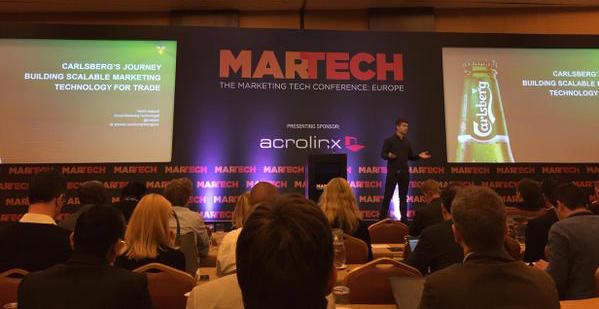
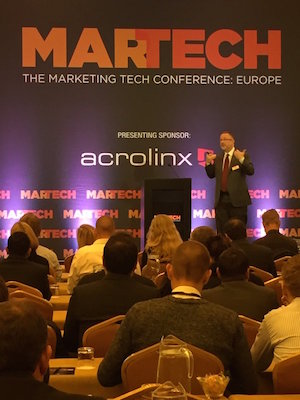
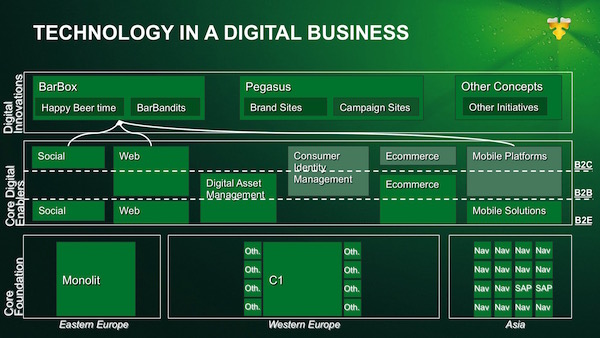
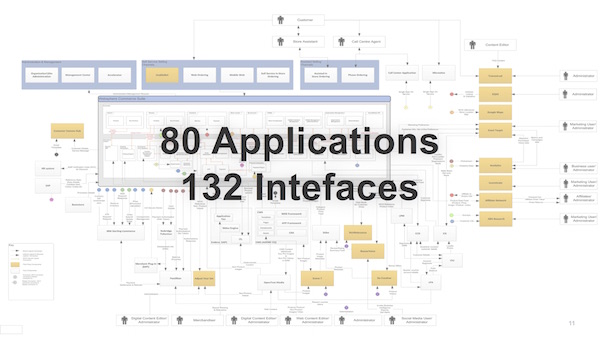

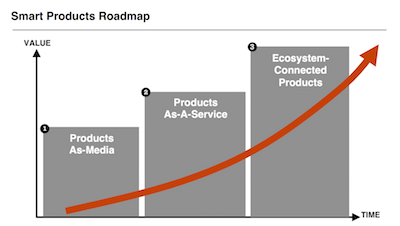
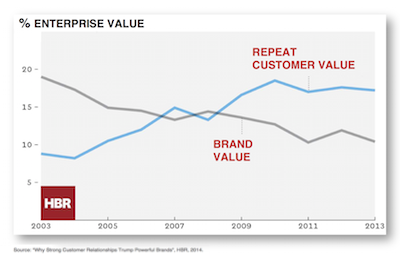



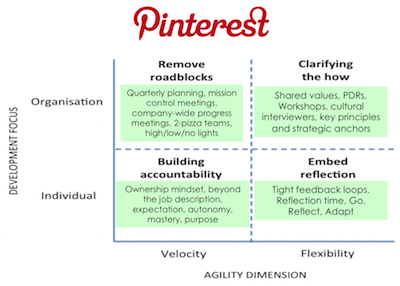
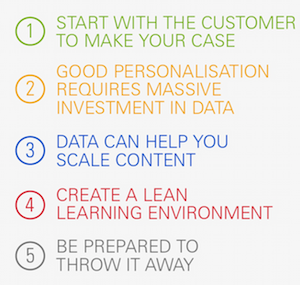
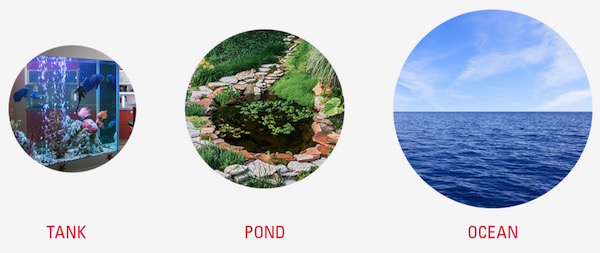
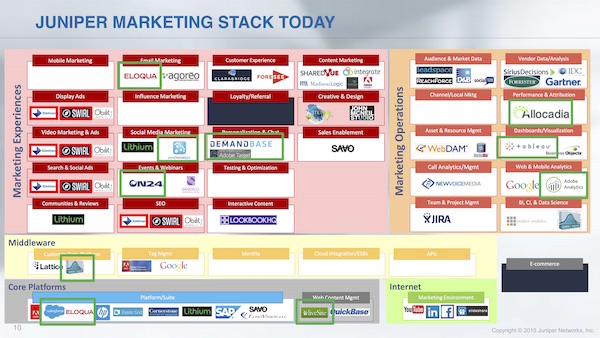

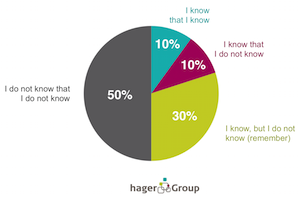
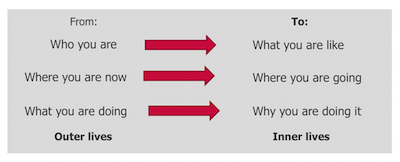
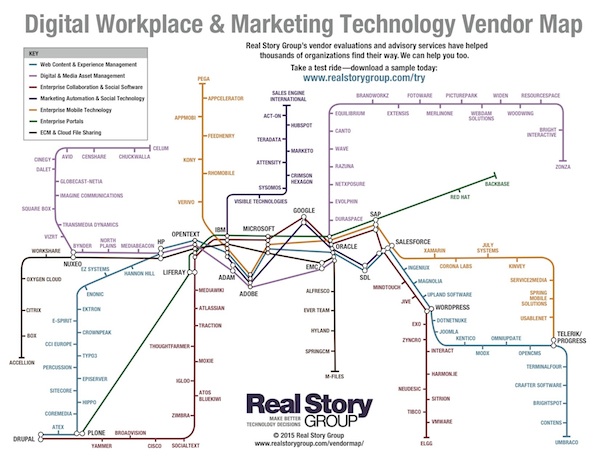
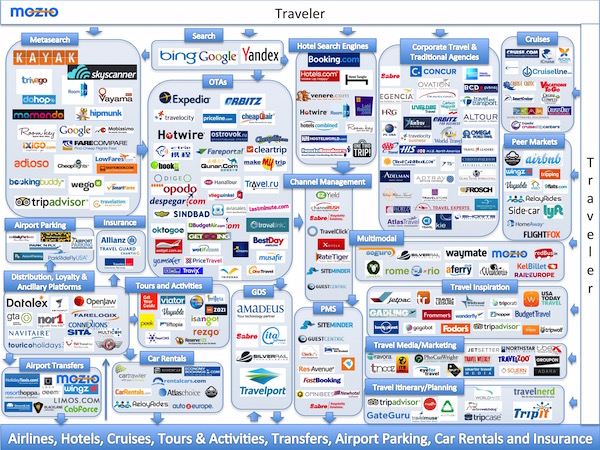
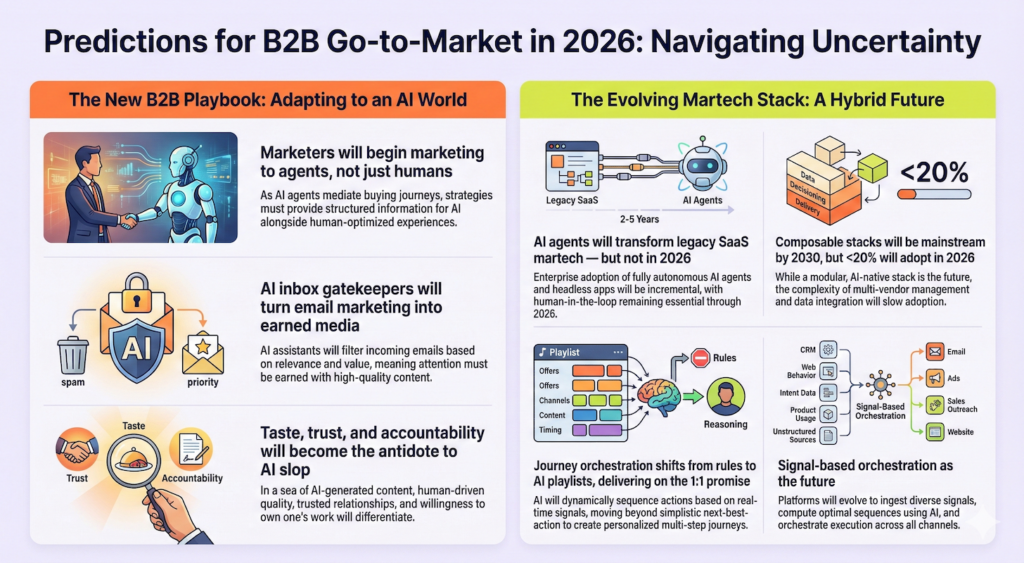

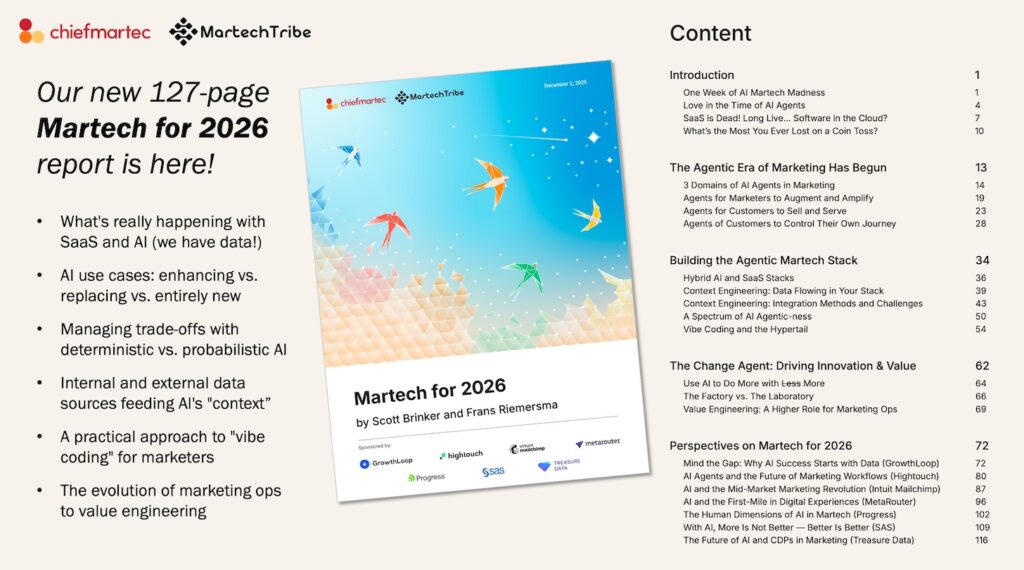
Brilliant stuff! I look forward to re-reading this again once my thoughts have settled after reading it once! Congrats again!
Wow, what exhaustive summary. Thanks a lot, Scott. It gives me great overview even if I was not able to participate. I see a lot of martech market maps were presented – I love the metro map form :). I’d be interested to hear what were outcomes from the panels, on the trends. Will you write about it?
Scott, a big thank you to the MarTech crew for bringing together folks with problems, others with solutions, and some tremendous war stories. I’ll definitely be attending next year and bringing more people with me. MarTech Europe – the word is out!
Love the subway map, I had the idea to do this a few months ago but never took the time. More than happy than someone did it 🙂
Are you coming to Australia? I hope so.